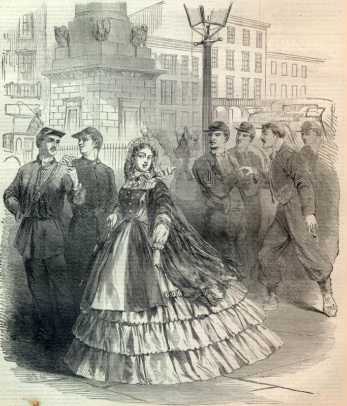The Story of the Characters

The principal character in The Choice Was Gray, Will Cross, is a fictionalized individual who represents a typical young Civil War soldier from the northwestern part of Virginia in the 1860s. The Cross family, as well as members of the Brantlett and Redding families, also are fictional characters. Each individual in these groups is based on a composite of various persons the author has known in his lifetime.
Other characters, however, are based on historical figures as much as possible. Major historical figures, such as Robert E. Lee, Thomas J. “Stonewall” Jackson and other prominent generals and officers in the Confederate army, are portrayed as seen in history. Words spoken by them in the novel are taken from actual records. This also is true, for the most part, of John Carleton Higginbotham, who formed the Upshur Grays in 1861 and eventually became commander of the brigade in which the Grays were a part.
Members of the Grays mentioned by name in the novel were on the actual roster of the company. Some factual information was used in such cases, including the fate of individual characters wounded, killed, taken prisoner or hospitalized. The dialogue for men of the Grays is made up, but closely follows word usage common in the 19th century in the part of Virginia from which they came.
Descriptions of battles, winter quarters, order of march and such—even weather conditions—closely adhere to actual records. The placement of the Upshur Grays, and the 25th Virginia Regiment, in battle or on the march, also closely follows the records.
Other characters, however, are based on historical figures as much as possible. Major historical figures, such as Robert E. Lee, Thomas J. “Stonewall” Jackson and other prominent generals and officers in the Confederate army, are portrayed as seen in history. Words spoken by them in the novel are taken from actual records. This also is true, for the most part, of John Carleton Higginbotham, who formed the Upshur Grays in 1861 and eventually became commander of the brigade in which the Grays were a part.
Members of the Grays mentioned by name in the novel were on the actual roster of the company. Some factual information was used in such cases, including the fate of individual characters wounded, killed, taken prisoner or hospitalized. The dialogue for men of the Grays is made up, but closely follows word usage common in the 19th century in the part of Virginia from which they came.
Descriptions of battles, winter quarters, order of march and such—even weather conditions—closely adhere to actual records. The placement of the Upshur Grays, and the 25th Virginia Regiment, in battle or on the march, also closely follows the records.